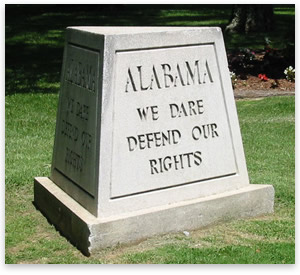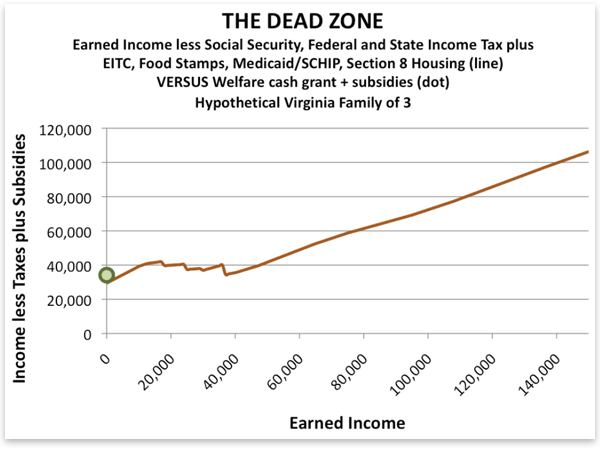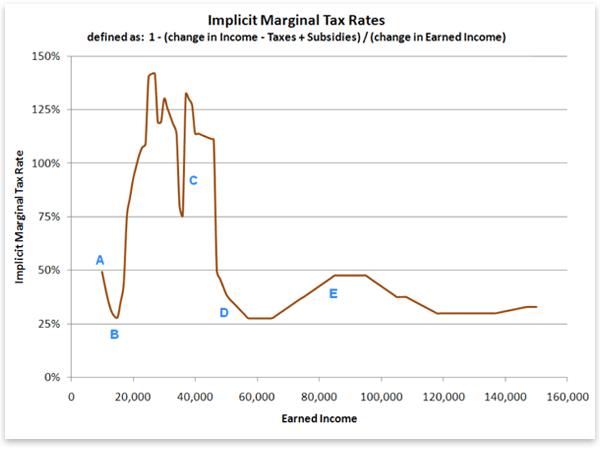How Bad is Alabama's Tax Structure?
Politics / Taxes Jul 01, 2010 - 10:16 AM GMT Helping the poor is one of the most important things society does. But we do the poor no favors when we promote public policies that perpetuate poverty.
Helping the poor is one of the most important things society does. But we do the poor no favors when we promote public policies that perpetuate poverty.
This especially applies to the tax system.
 In this respect, the state of Alabama is often criticized. Take the news last fall that Alabama ranked 50th out of 50 states in terms of state tax rates.[1] It brought the usual responses. The Birmingham News bemoaned the positive relationship between tax revenue and quality of public services. Others renewed their criticisms of the way Alabama taxes the poor.
In this respect, the state of Alabama is often criticized. Take the news last fall that Alabama ranked 50th out of 50 states in terms of state tax rates.[1] It brought the usual responses. The Birmingham News bemoaned the positive relationship between tax revenue and quality of public services. Others renewed their criticisms of the way Alabama taxes the poor.
This last point is based on the fact that Alabama's tax burden is higher for individuals who pay lower marginal tax rates. (The marginal tax rate is the rate paid on the last dollar earned. In progressive tax systems, lower income earners pay lower marginal rates, while higher income earners pay higher marginal rates. In regressive tax systems, lower income earners pay higher marginal rates.) The Institute on Taxation and Economic Policy recently found that in Alabama, those comprising the lowest-wage quintile paid 11.2 percent of their income in state and local taxes, while those in the top-wage quintile paid 5 percent.
Much of this disparity can be explained by property tax rates in the state, as well as the sales tax that adversely affects low-wage earners (as a proportion of income) relative to high-wage earners. What is more, a family of four starts paying state income taxes after earning $12,600 — an amount that is less than three-fourths of the federal poverty line.[2] Alabama's earning threshold is the second lowest in the nation, after Montana's threshold of $12,200.
In the present article, I would like to defend Alabama's tax rates as they apply to the poor, with an important caveat. As a libertarian, I believe that any tax cut at any time — whether for the rich, the middle class, or the poor — is to be preferred to the status quo.
A real tax cut, however, is more than mere bookkeeping; it requires that there be fewer public provisions of goods and services. Public services often crowd out the private provision of such goods and services, which are superior in terms of economic efficiency and common morality.
Thus, my defense of tax rates should not be interpreted as a defense of the tax system in general. Rather, the present article is a defense of a tax regime that I consider less bad compared to many of its alternatives.
To defend this system, I would like to borrow from a Mises Daily by Shenandoah University economist Clifford Thies that studied implicit marginal tax rates and then questioned how this affects incentives.[3] Thies's analysis is on the federal level. I will argue that Alabama's tax system thwarts the negative incentives produced by the federal taxes.
Writing from Virginia, Thies considers a hypothetical Virginian family of three, consisting of one adult and two minor children, and he presents the following graph:

The vertical axis measures net income — income minus taxes plus subsidies — while the horizontal axis measures income earned in the labor force. As you can see, this family can receive over $30,000 a year in income before even entering the labor market.
Once this hypothetical head of household enters the labor market, he or she enters what Thies calls the Dead Zone, an area in which there is very little real benefit to working until the work pays well beyond $40,000 a year. The squiggly line in the Dead Zone reflects the fact that welfare and other income-based wealth transfers often disappear once workers enter the labor market. Unfortunately, given the median income in Alabama, a considerable number of workers operate in this Dead Zone.[4]
Thies's data are based on the federal system of taxes and benefits, and based solely on that system, they strongly suggest that work offers little or no benefit for families of three earning $40,000 a year or less.
To drive this point home, Thies constructs an implicit marginal tax rate, which is based on the assumption that the loss of income-based wealth transfers is an implied tax on low-income workers. This rate is compared with earned income on the following graph. Needless to say, the results do not match the intuitions of the typical person who advocates transfers of wealth from the wealthy and middle classes to the poor:

Since there is no federal tax on lower incomes, the line does not begin at the vertical axis — although the availability of subsidies to those wage earners reflects a nominal tax rate that is negative. Once one begins to work, the tax rate falls dramatically (see the difference between points A and B) due to the earned-income tax credit. The area from points B to D, however, emphasizes the effect of the Dead Zone, in which any gains from working are countered by losses in benefits. The increase from D to E reflects efforts by the political class to maximize revenues, the brunt of which is taken from workers earning at those levels of income. The middle- and upper-middle-income classes are where the money is.
Thies is concerned about the incentives found in such a tax system. Why work if, in doing so, you are no better off in net terms until you begin to earn more than $40,000? That people clearly do so reflects, I think, social pressures that look down upon nonworkers, as well as the lax application of benefits on the part of social agencies distributing what is, to the recipients, free money.
Still, over time, the skewing of incentives has the effect of weakening work ethics and values necessary for the poor to become self-sufficient. In the long run, this causes (1) the poor to stay poor and (2) the absolute number of poor to rise.[5]
Thies concludes that a tax system that treats the poor in this way is evil and stupid, and it is hard to disagree. But remember that his analysis applies to incentives created at the federal level, which individual states can thwart by imposing taxes that reduce the benefits from not working. By applying tax rates to lower-income workers, states reduce the reward for remaining poor. This has the effect of lowering the returns for remaining in the Dead Zone.
The problem that Alabama and all states face in this regard is the ability of the federal tax system (and its perverse incentives) to overwhelm the state systems and whatever incentives they would otherwise create. States with regressive tax systems, more by accident than by design, serve to thwart federal tax effects that reward poverty. In the long run, the effect should reduce the benefits of being poor.
This may very well be the case in Alabama. A recent study by the Center for Law and Social Policy (CLASP) found that, when taking housing costs into account, Alabama's poverty rate is much lower than its official federal ranking, which (incredibly) ignores housing. CLASP ranked Alabama at 31 among all states in terms of state poverty rates — the rankings are from lowest to highest — which compares well among other southern states, such as Mississippi (48), Louisiana (44), Kentucky (41), Georgia (37), and Tennessee (35).[6]
To be sure, many factors besides tax structure explain poverty. Nonetheless, as costs of living increase, it is better to be poor in many states other than Alabama, and in those states one would expect increasing poverty rates over time. The increase would be a result of unemployed and low-wage workers migrating to those states that are supposedly more "poor friendly" and as workers indigenous to those states decide that the returns to productive work are not better, on the margin, than their alternatives.
Meanwhile, states that do not reward being poor find poverty levels falling. Tax systems play a role in this phenomenon. Those that provide incentives to the poor to help themselves are to be preferred, especially since the federal system, on its own, thwarts those incentives. Ultimately, the poor will have to help themselves. Tax systems at the federal or state level that hinder them from doing so should be dismantled.
Christopher Westley is an adjunct scholar at the Ludwig von Mises Institute. He teaches in the College of Commerce and Business Administration at Jacksonville State University. Send him mail. See Christopher Westley's article archives. Comment on the blog.![]()
Notes
For more information, I recommend Marvin Olasky's The Tragedy of American Compassion (Wheaton, IL: Crossway Books, 2008 [1992]) and Charles Murray's Losing Ground (New York: Basic Books Anniversary Edition, 1994).
I would like to thank Gene Padgham for helpful comments.
[1] White, David. "Alabama Boasts Lowest Taxes in Nation," The Birmingham News, November 1, 2009.
[2] For more data and arguments along these lines, see Jason A. Levitis and Andrew C. Nicholas, "The Impact of State Income Taxes on Low-Income Families in 2007," Washington, DC: Center on Budget and Policy Priorities, October 29, 2008.
[3] Clifford Thies, "The Dead Zone: The Implicit Marginal Tax Rate," Mises Daily, November 9, 2009.
[4] The US Census listed Alabama's median income at $42,666 in 2008. See Les Christie, "Where to Find the Fattest Paychecks," CNNmoney.com.
[5] Some evidence of these outcomes may be partially found in the findings of recent studies. See Roberton Williams's Urban Institute and Brookings Institution study, "Who Pays No Income Tax?" Stephen Ohlemacher's AP story "Nearly Half of US Households Escape Fed Income Tax," and Vincent Fernando and Kamelia Angelova's "Chart of the Day" showing that 40 percent of Americans in 2006 paid 87 percent of all federal taxes.
[6] Dorothy Smith, "Measure by Measure: The Current Poverty Measure v. the National Academy of Sciences Measure." Washington, DC: Center for Law and Social Policy, November 2008.
© 2010 Copyright Ludwig von Mises - All Rights Reserved Disclaimer: The above is a matter of opinion provided for general information purposes only and is not intended as investment advice. Information and analysis above are derived from sources and utilising methods believed to be reliable, but we cannot accept responsibility for any losses you may incur as a result of this analysis. Individuals should consult with their personal financial advisors.
© 2005-2022 http://www.MarketOracle.co.uk - The Market Oracle is a FREE Daily Financial Markets Analysis & Forecasting online publication.
Comments
|
Alabama Taxes
24 Sep 10, 00:47 |
Tax E filing
I like your article and really very informative article. E filing is the best way for file your Alabama state taxes and federal tax return. |



